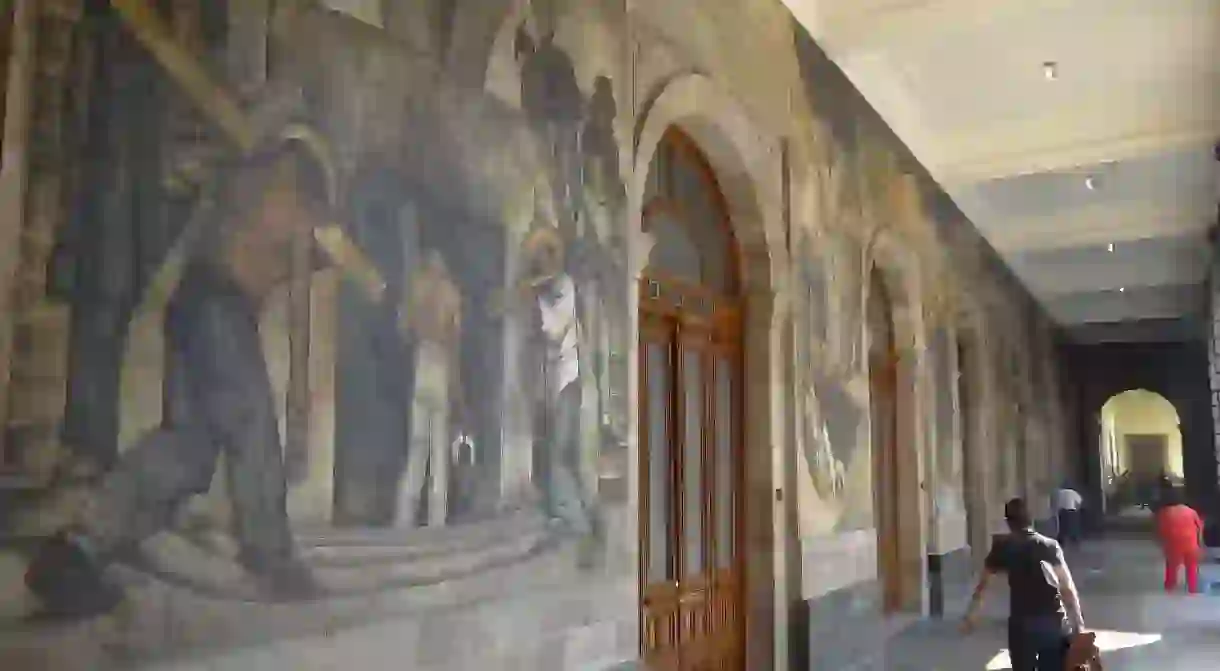11 Surprising Things You Never Knew About Diego Rivera

The famed Mexican muralist is one of the best-known artists from the country. Here are 11 facts you might not know about him.

His name is almost comically long
While we know him as Diego Rivera, his full name is amazingly long. Imagine trying to write Diego Maria de la Concepcion Juan Nepomuceno Estanislao de Rivero y Barrientos Acosta y Rodriguez on your school work!
His twin brother died very young
Rivera had a twin brother called Carlos Maria, who unfortunately passed away at the age of one and a half. A similar fate would await Rivera’s firstborn son, who died at the age of two.

His talent became apparent at an early age
Rivera started drawing aged three, and he used to draw all over the walls and furniture of his home. His parents grew so frustrated with his doodlings that they put up canvas and chalkboards on the walls.
Frida Kahlo was one of four wives
He may have famously married Frida Kahlo, but she was his third wife out of four. Rivera and Kahlo married in 1929, divorced in 1940, but then remarried in 1941. After Kahlo died in 1954, Rivera married his agent Emma Hurtado. He was also famous for various extramarital affairs.

His marriages were tempestuous
Rivera had relationships with many women in his lifetime, and Kahlo was also known to have affairs with both men and women. This placed serious strain on their marriage, especially when Rivera had an affair with Cristina Kahlo, Frida’s younger sister.

He founded Mexicanidad
Experts credit Rivera for founding the art style known as ‘Mexicanidad’, which focuses on Mexican culture. One of its main features is the flattening of three-dimensional objects into two dimensions. It later became a movement that included other famous Mexican artists such as Orozco, Kahlo and Siqueiros.
He was an avowed atheist
Rivera was not shy about believing “religions to be a form of collective neurosis.” One of his works, “Dreams of a Sunday in the Alameda”, was banned for nine years because it showed a writer holding a sign that said “God does not exist.” While he may have removed the inscription so that the work could be displayed, Rivera maintained his own public commitment to atheism.

He was a Communist
Once a member of the Mexican Communist Party, Rivera’s politics were firmly left-wing. He used his art to discuss themes such as economic inequality, and refused to bend to wealthy patrons who didn’t agree with his views. In one famous episode, the Rockefeller Center commissioned Rivera to make a mural. He produced a piece of work called “Man at the Crossroads,” which showed Lenin leading a protest. Apparently incensed by the vision, the Rockefeller Center had the work destroyed.
He hosted the exiled Leon Trotsky
During his second marriage to Frida Kahlo from 1940 onward, Rivera hosted Leon Trotsky at his home after the Marxist revolutionary was exiled from the Soviet Union. Trotsky was later assassinated in Mexico City by a Soviet agent using an icepick.

He was a Mexican celebrity
Few artists break into the mainstream in the way that Rivera did in Mexico in his era. He became hugely popular and his fame was also driven by his outspoken views. He was far more popular in Mexico than Frida Kahlo ever was while she was alive.
He was a big man, literally and figuratively
Rivera was known to joke about his own impressive physique, and he tipped the scales at 300 pounds. He eventually died of heart failure in 1957 following a period of treatment for cancer.













